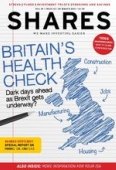Archived article
Please note that tax, investment, pension and ISA rules can change and the information and any views contained in this article may now be inaccurate.
70 could be new age for state pension

People often underestimate the value of the state pension, but it remains a central plank of retirement planning for the majority of investors. The single-tier state pension pays a man around £8,000 a year from age 65 at the moment – and that payment is protected against inflation rises through the ‘triple-lock’.
To buy a similar guaranteed income stream from an insurer today would require a lump sum somewhere in the region of £250,000.
However, two reviews published last week on behalf of the Government could pave the way for a cut in the value of the state pension, and a significant rise in the age at which younger people can receive it.
Here’s my brief guide to what is happening to the state pension, and how it could affect you.
What’s going on?
The first review, authored by former CBI director-general John Cridland, focused on making the state pension ‘affordable in the long term, fair to current and future generations of pensioners, and consistent with supporting fuller working lives’.
Its key recommendations include:
• Increasing the state pension age to 68 by 2039 (seven years sooner than current plans).
• Limiting state pension age increases to one year in any 10 year period.
• Scrapping the state pension triple-lock (which links increases in the state pension to the highest of earnings, prices or 2.5%) in favour of a link to earnings.
The second paper, published by the Government Actuary’s Department, models two scenarios – one where exactly a third (33.3%) of an adult’s life is spent in receipt of the state pension, and the second where this proportion is slightly lower at 32%.
What does this mean for savers?
Savers should brace themselves for an accelerated increase in the state pension age, with anyone under 45 today forced to wait until at least age 68 to qualify.
It could be even worse for younger people, with the second report implying anyone born after April 1986 could face a state pension age of 70.
Without reform, spending on the state pension will increase from 5.2% of GDP in 2016/17 to 6.2% of GDP in 2036/37.
As life expectancy continues to march ever higher, it was inevitable the Government would eventually look to take a grip on state pension spending.
The triple-lock looks like the lowest hanging fruit, although a Government scolded by the self-employed National Insurance debacle in this year’s Budget will not want to break another manifesto pledge by scrapping it before 2020. However, the policy’s shelf life now appears limited beyond this date.
All of this is part of a broader shift from the state and employers so that individuals take responsibility for their retirement provision. That means it’s more important than ever to make the most of the incentives available to build a nest egg of your own.
Tom Selby,
senior analyst, AJ Bell
Important information:
These articles are provided by Shares magazine which is published by AJ Bell Media, a part of AJ Bell. Shares is not written by AJ Bell.
Shares is provided for your general information and use and is not a personal recommendation to invest. It is not intended to be relied upon by you in making or not making any investment decisions. The investments referred to in these articles will not be suitable for all investors. If in doubt please seek appropriate independent financial advice.
Investors acting on the information in these articles do so at their own risk and AJ Bell Media and its staff do not accept liability for losses suffered by investors as a result of their investment decisions.
Issue contents
Big News
Feature
Great Ideas Update
Investment Trusts
Larger Companies
Main Feature
Smaller Companies
Story In Numbers
- Most popular exchange-traded funds in March 2017
- Best performing stocks in FTSE All-Share Index so far this year
- Hurricane may be sitting on ‘largest undeveloped discovery’ in North Sea
- 12.5%: Percentage of Lloyds’ loans deemed ‘high-risk’
- $54.7bn: Netflix’s blockbuster value creation
- Watkin Jones family and directors cash in £70m worth of stock
- 80: A rare ‘buy the market’ alert has been sounded for US equities
- £1m: Acacia’s daily hit from export ban

 magazine
magazine








